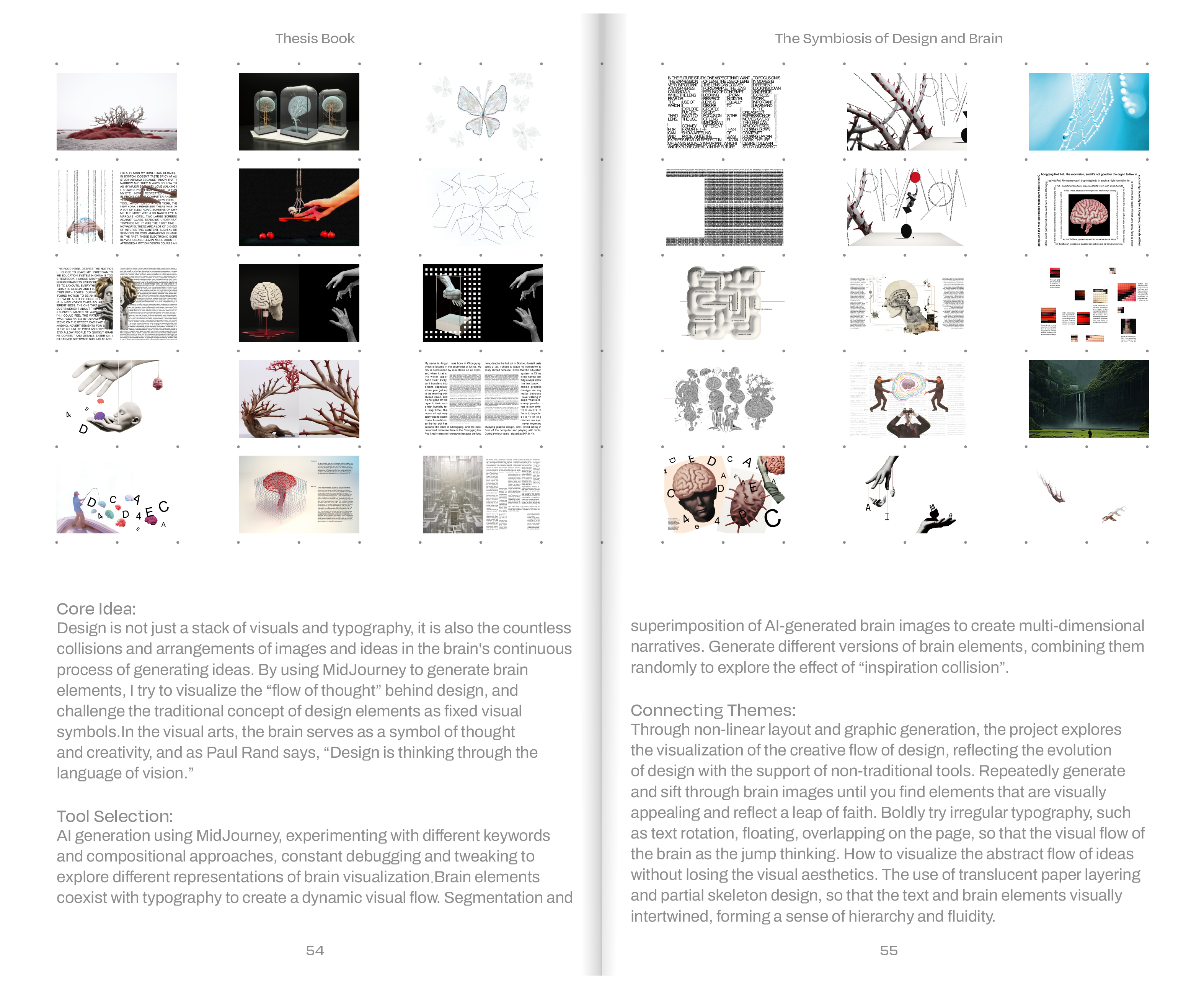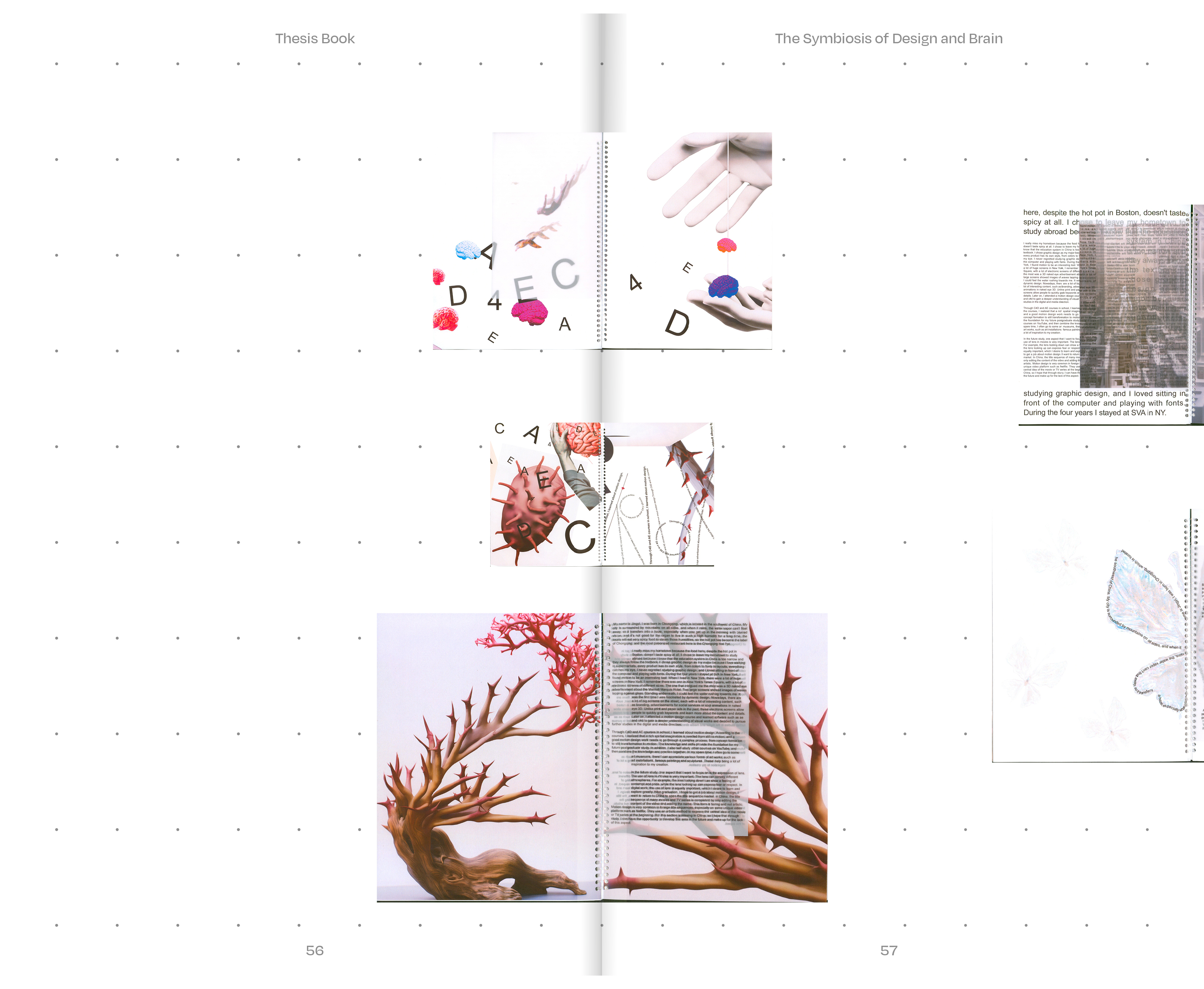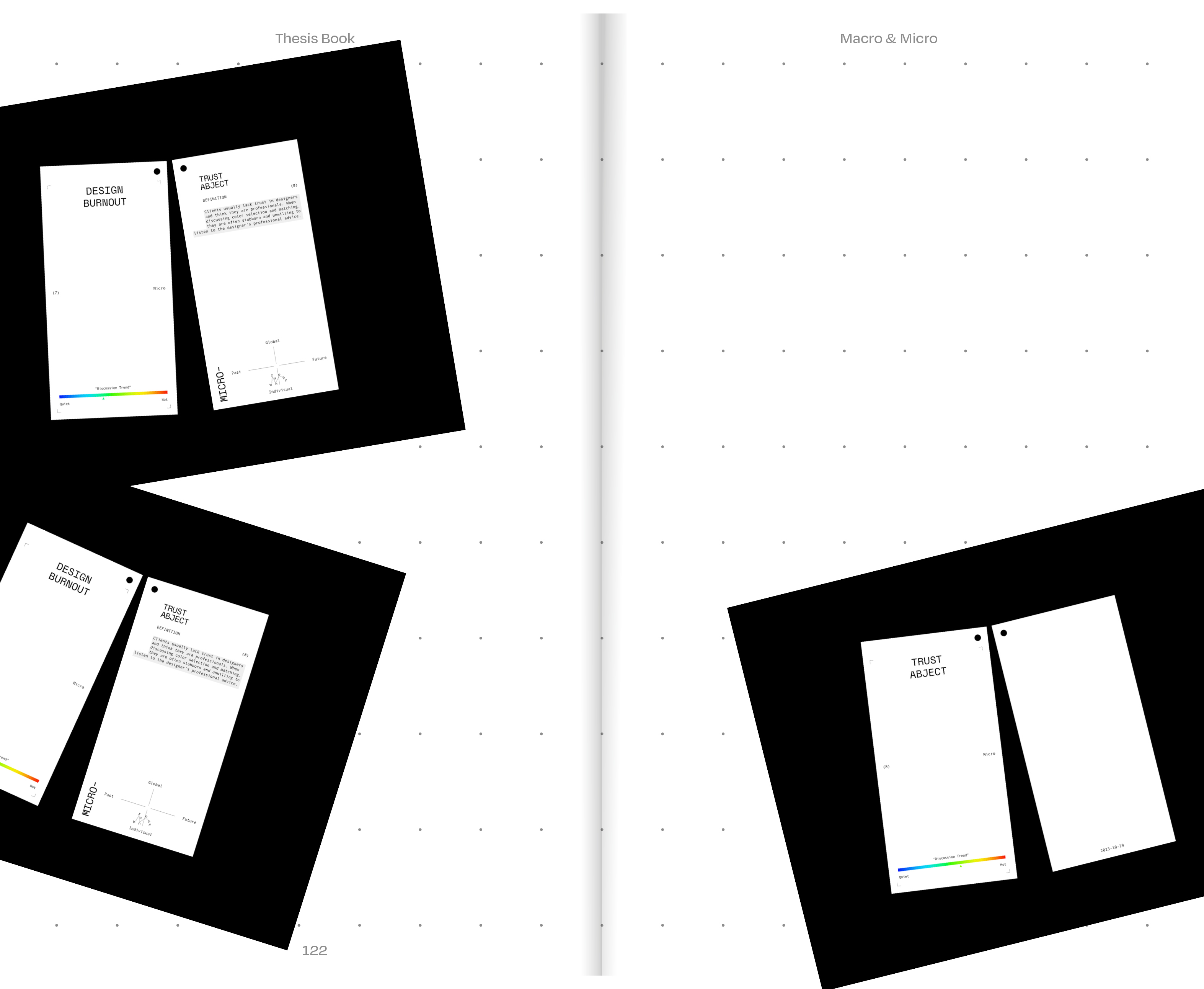[1]
Thesis-Design Across Boundaries
Thesis Book
Intro:
Design Across Boundary is an exploration of how design can break away from rigid, logic-driven systems.
Through a series of experiments with unconventional tools, materials, and processes, this thesis challenges traditional structures to embrace more intuitive, emotional, and fluid approaches.
It reflects a journey of pushing beyond defined limits — across disciplines, across mediums, and across expectations — to discover new possibilities for how ideas can be imagined, formed, and shared.
Design Across Boundary is an exploration of how design can break away from rigid, logic-driven systems.
Through a series of experiments with unconventional tools, materials, and processes, this thesis challenges traditional structures to embrace more intuitive, emotional, and fluid approaches.
It reflects a journey of pushing beyond defined limits — across disciplines, across mediums, and across expectations — to discover new possibilities for how ideas can be imagined, formed, and shared.

Not only does the content challenge conventional frameworks — the book itself abandons standard rules of design.
Instead of rigid grids, it introduces a dot-based system to guide composition, reflecting a freer, boundary-crossing approach to visual thinking.






In this thesis book, the visual compositions are liberated from traditional constraints. Images are not strictly confined by the book’s center fold or rigid grid systems. Instead, they flow freely—sometimes respecting the dotted point structure, sometimes breaking through it—symbolizing the fluidity and expansion of creative boundaries. The flexible use of space reflects the core spirit of this project: embracing both structure and freedom to challenge and reimagine the conventional design framework.



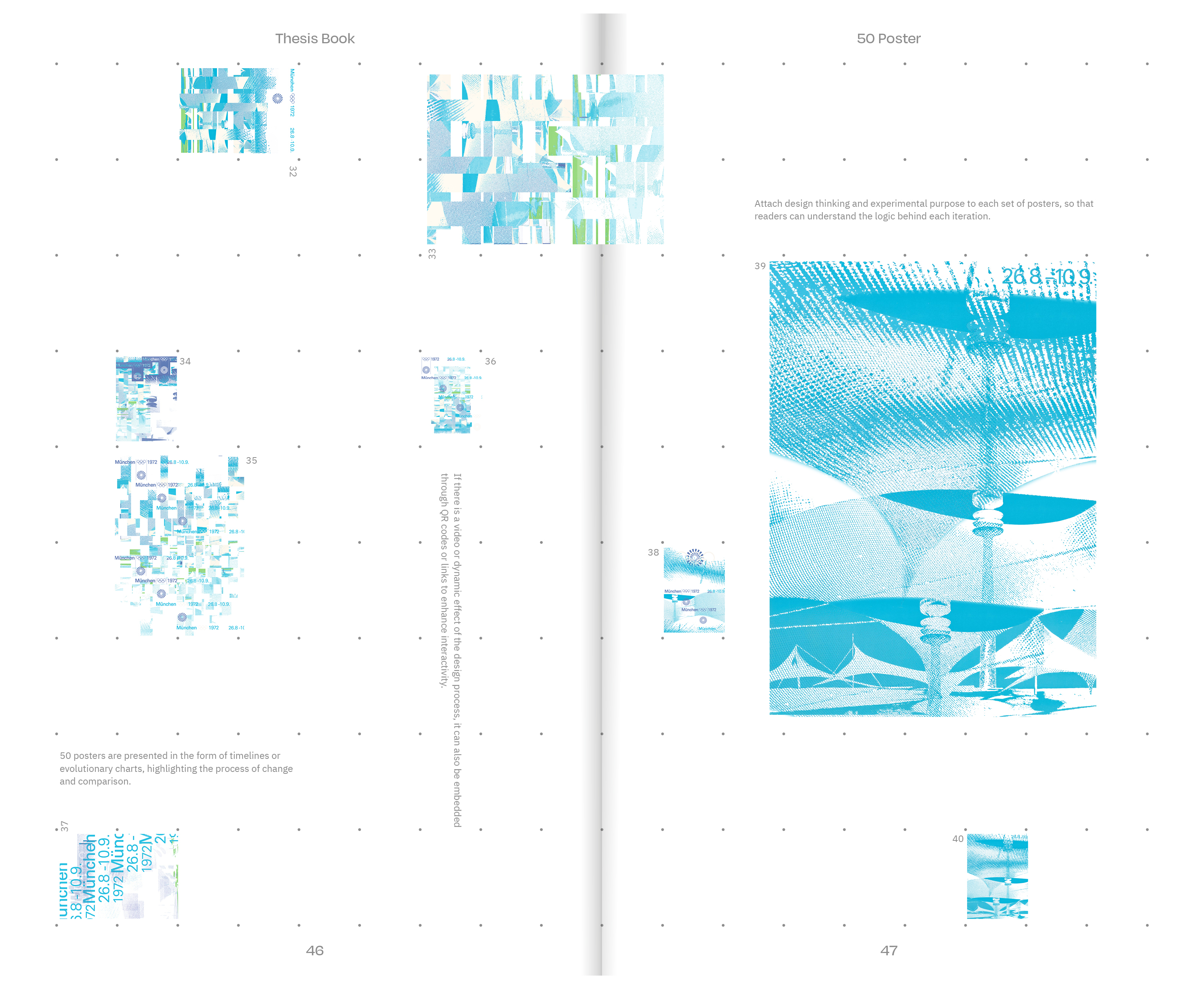


In this thesis book, I conducted interviews with three very different yet deeply inspiring contributors.
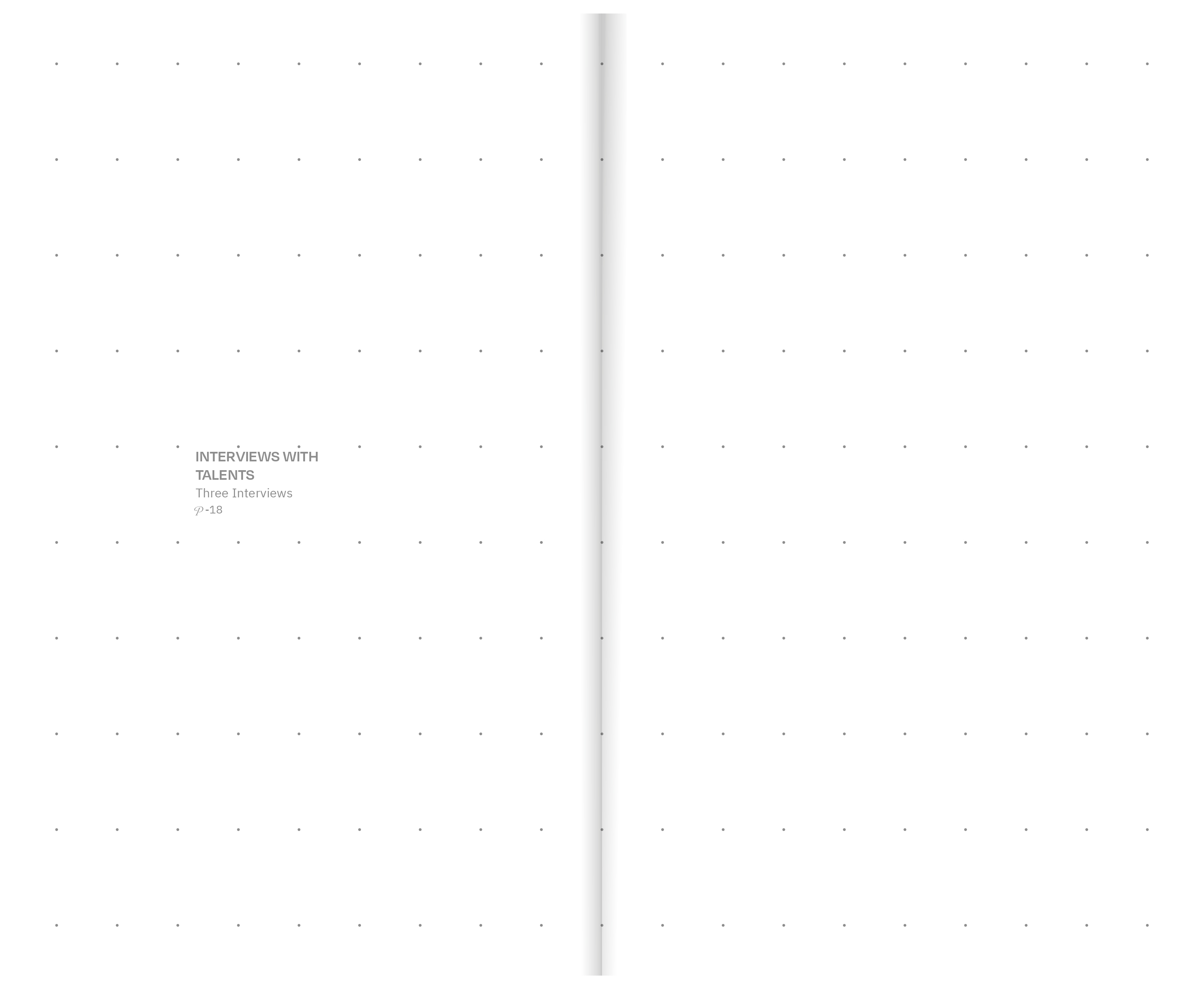
The first is a motion designer from Brand New School, whose work constantly challenges mainstream aesthetics by exploring new visual languages and unconventional styles.
Through this conversation, I gained insight into how persistent experimentation shapes a new direction for design.

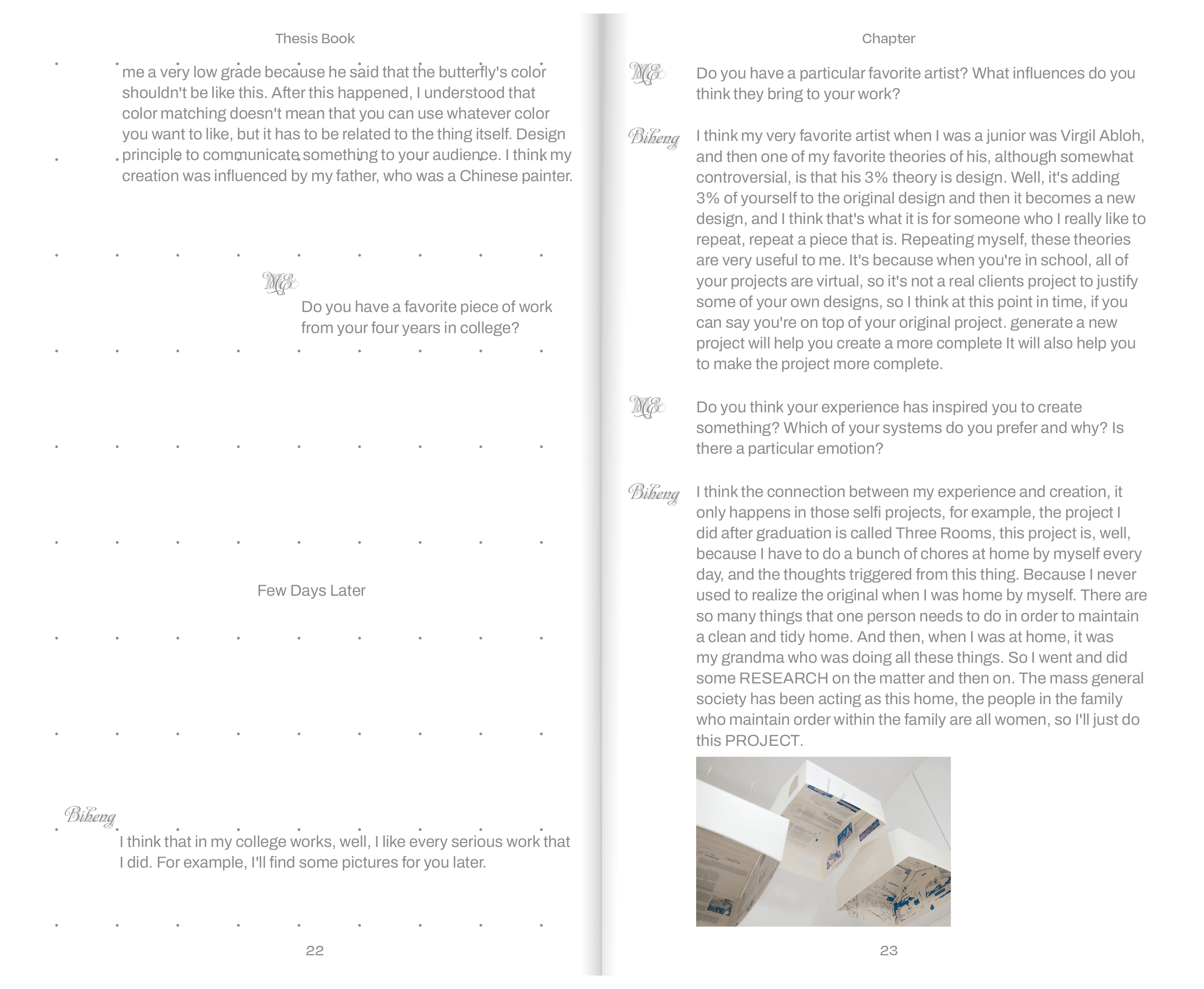

The second interview is with ChatGPT, an AI system I often collaborate with throughout my projects. I shared each of my projects with her, letting her help me summarize, reflect, and even generate new visual outcomes. Especially with the arrival of the 4.0 system, I experimented with asking her to create variations based on one topic, leading to surprising and inspiring results.




The third conversation is with DeepSeek, where we engaged in an in-depth dialogue around the core theme of my thesis book: breaking traditional design boundaries. This conversation helped refine my understanding of how new tools and thinking models are reshaping design practice today.

Together, these interviews weave a narrative of exploration, collaboration, and boundary-crossing, aligning closely with the spirit of Design Across Boundaries.
In the design of this book, I did not treat the pages as fixed, independent units, but rather as spaces that can be freely extended and explored across each page. The design creates a visual connection between the content of the previous page and the next, just like the “French Fold”, which utilizes the concept of paper folding and continuous layout to allow images to naturally cross the center seam, breaking the logic of traditional book pagination.
In my design, the image elements can freely cross the center of the page, not sticking to the rules of layout, but flexibly crossing and extending according to the visual flow and narrative needs, sometimes the content even continues to the next page, creating a more organic and continuous reading experience. This approach not only emphasizes the theme of “Design Across Boundaries”, but also makes each page feel like a free-flowing part of the whole.
